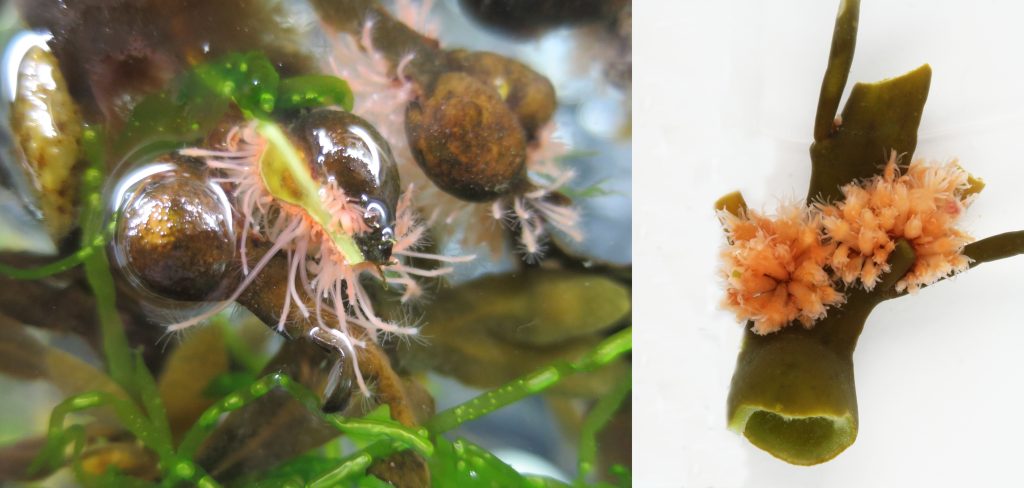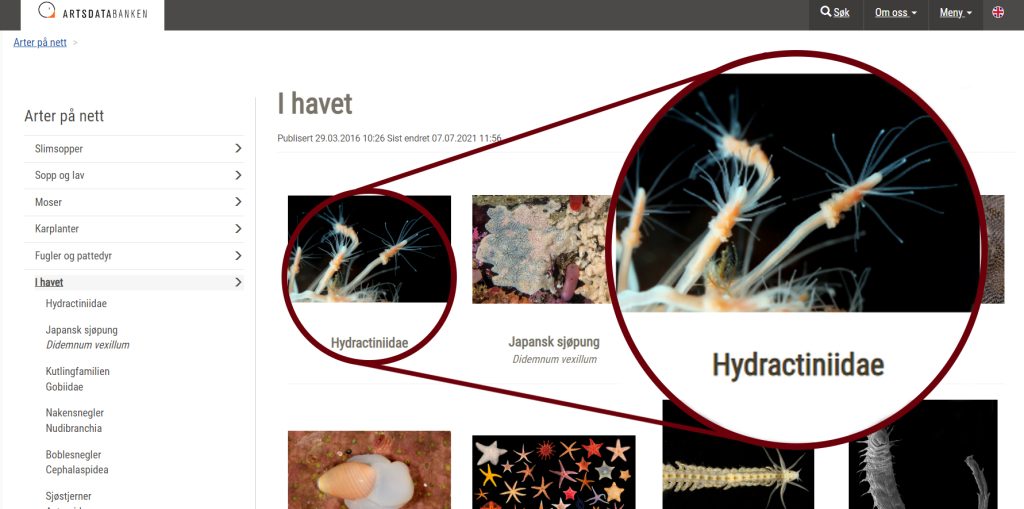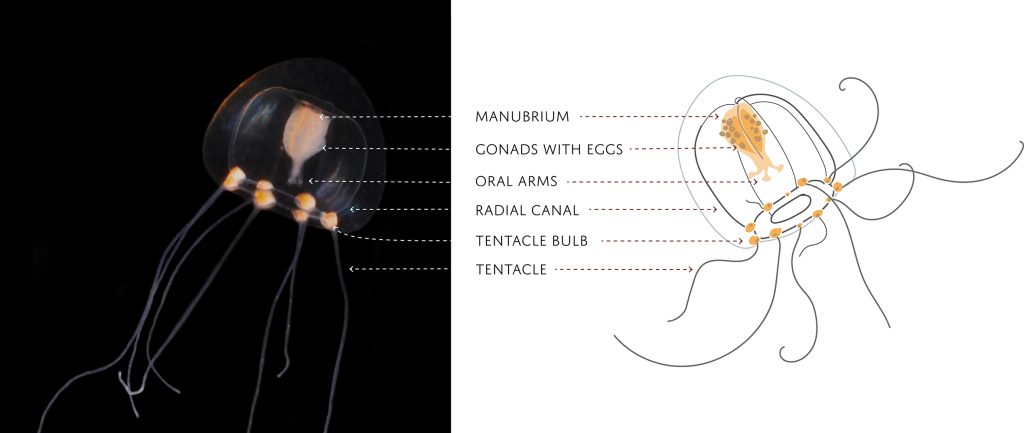Finding the correct name of the hydroids growing on shells of snails and hermit crabs can be notoriously difficult… but fear not! A new online resource is now available and we hope it will help everybody who is interested in these little critters.

Fig1. Have you seen these pink/orange ‘blobs’ growing on washed-up algae along the coast? They are hydroids of the species Clava multicornis. Read more about this and other Norwegian hydractiniids in the new arter på nett webpages. IC: Luis Martell (left), Katrine Kongshavn (right).
We (the UMB research team of NorHydro: Luis, Aino, Joan, and Lara) have created a series of species identification sheets for all the hydroids and jellyfish belonging to family Hydractiniidae. This family includes some hydroids that can be easily encountered during a walk along the coast or when snorkeling and scuba diving in Norway, and therefore we wanted to provide beach-goers and divers with a tool to find the correct name of these animals.

Fig2. The new identification sheets for Hydractiniidae are available inside the section I havet of the Arter på nett platform in Artsdatabanken’s website. IC: Artsdatabanken.
Many hydractiniids are known as ‘snail fur’ because they give a furry appearance to the shells they are growing on, while others grow on rocks or on algae. Identifying the species still requires a little effort, but altogether they are one of the best groups to start with for anyone interested in hydrozoan diversity in Norway. This is what motivated Lara, a MSc student at the time, to created the first version of these sheets (together with some beautiful illustrations) which were then developed further with text from everybody in the team.
The editors and consultants at Artsdatabanken helped us throughout the process, and we are happy to present the final version of this online resource available here:
Arter på nett: Hydractiniidae

Fig3. The anatomy of a polyp colony of Hydractiniidae is best explained with a combination of images at high-magnification and detailed diagrams. IC: Luis Martell (left), Lara Beckmann (right).

Fig4. Hydractiniid hydromedusae are smaller than 1 cm, but they still have several characters that we use for identification. IC: Joan J. Soto-Angel (left), Lara Beckmann (right).

Fig5. Both the hydromedusa and the hydroid stages of the three species of Podocoryna occurring in Norway are included in the new Hydractiniidae arter på nett. IC: Joan J. Soto-Angel, Bernard Picton, Lara Beckmann
The publication of the Hydractiniidae identification sheets marks the end of our project NorHydro. The project’s main objective was to map the diversity of hydrozoans in Norway, but we also tried to present marine hydroids to all those not familiar with these amazing creatures. During its 3 year’s run, NorHydro produced a detailed inventory of Norwegian hydrozoans through an integrative (morphology + DNA) approach: we collected samples in >90 sites around the country and analyzed existing museum specimens to produce >1200 new records and high-quality, open access DNA barcodes for 160 species. NorHydro’s scientific team identified 12 cases of species complexes, supervised 5 MSc thesis, and participated in >20 outreach activities and presentations in academic events. All in all, NorHydro was an extremely enriching experience and I’m confident its results will help us understand a little better the diversity of marine invertebrates in Norway.
-Luis

